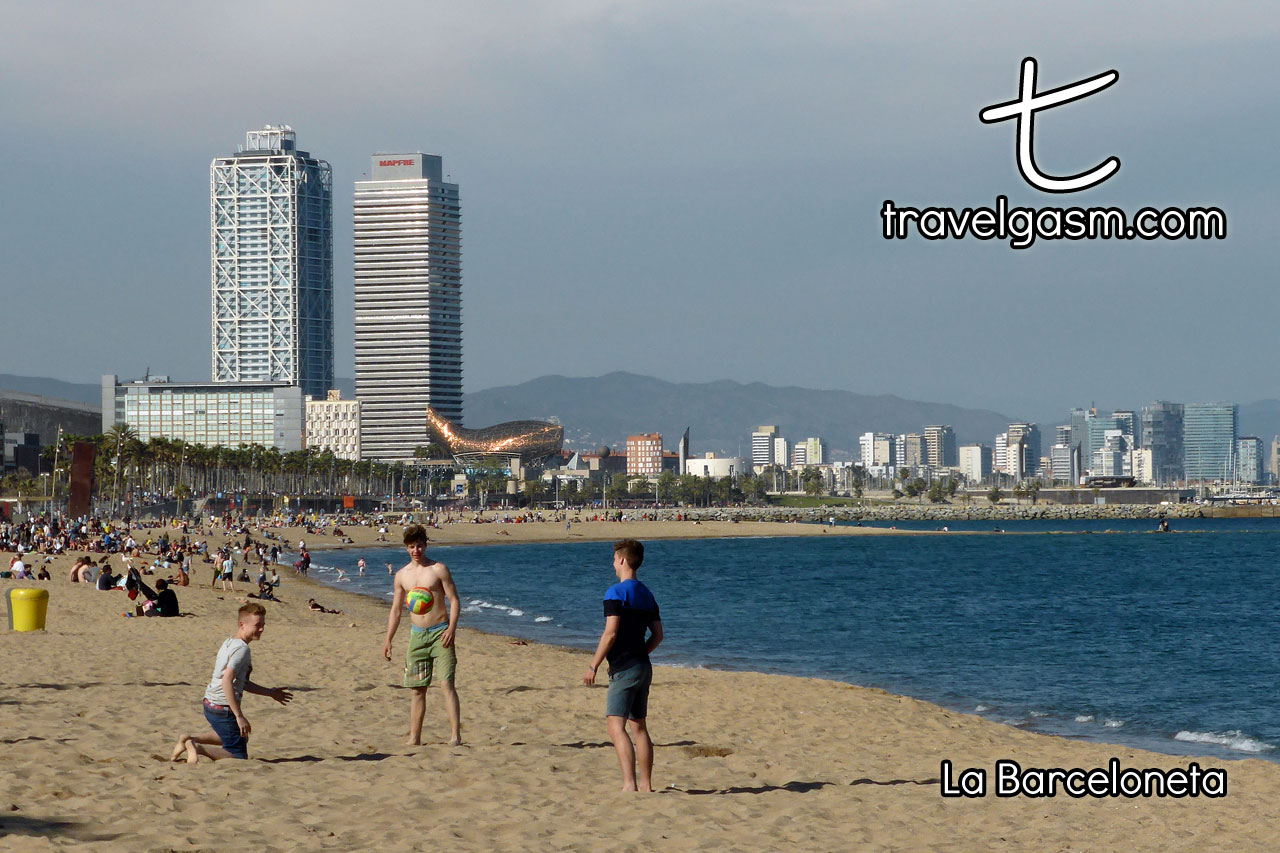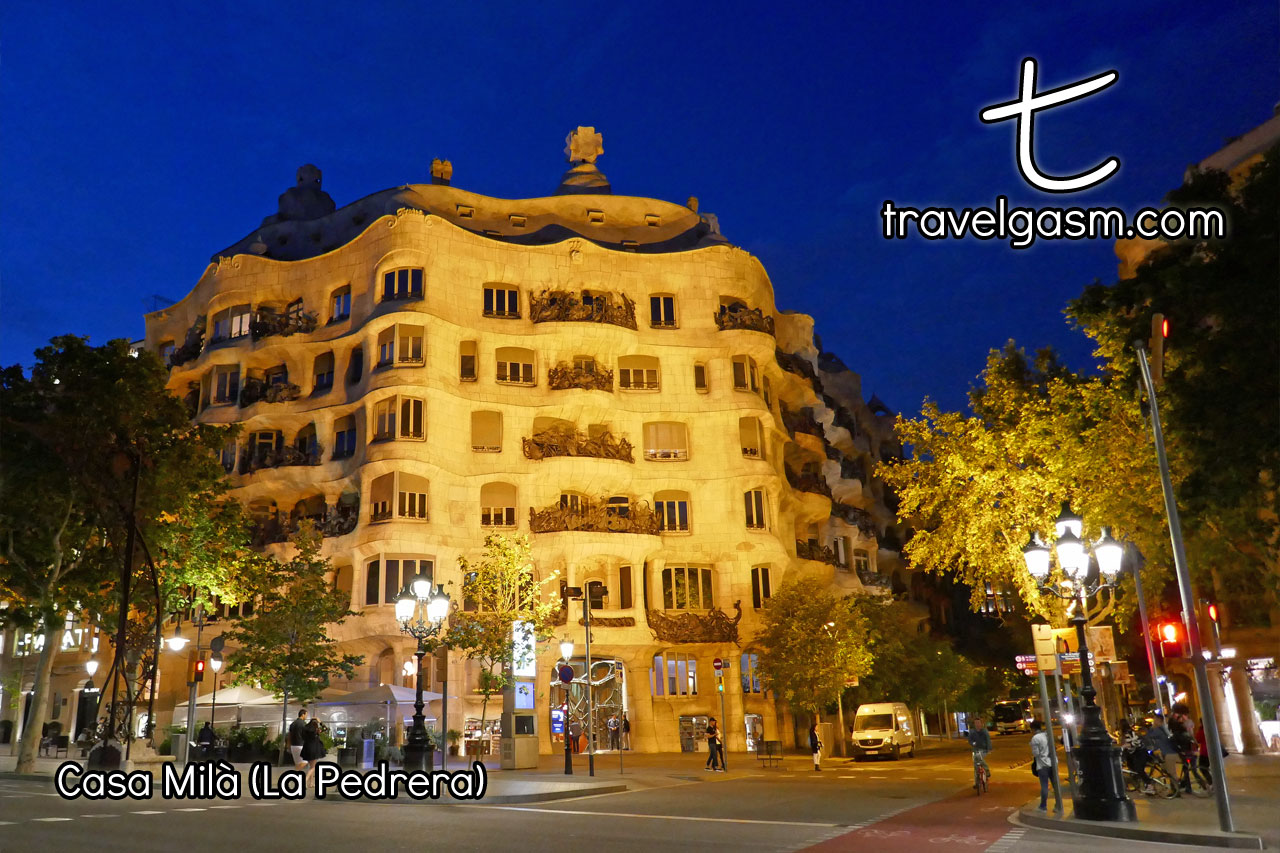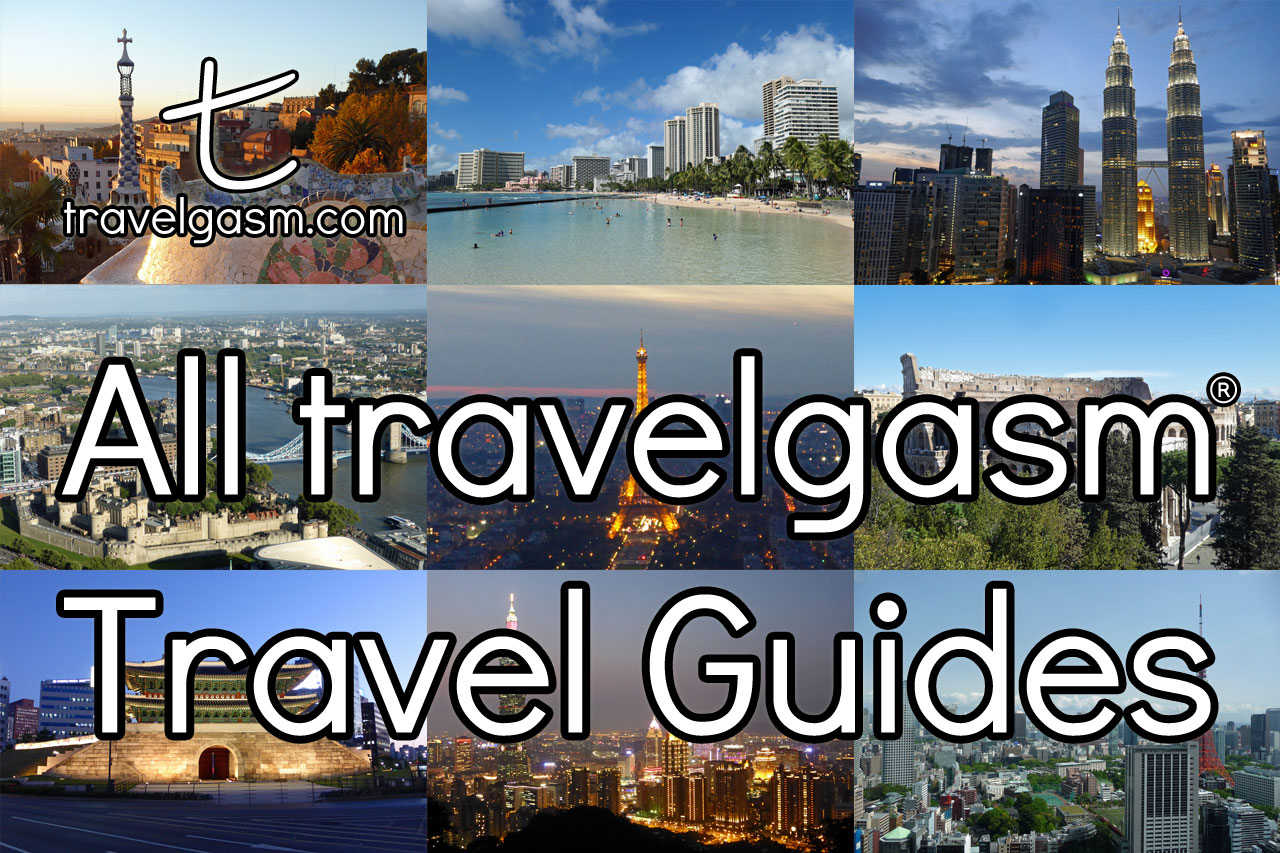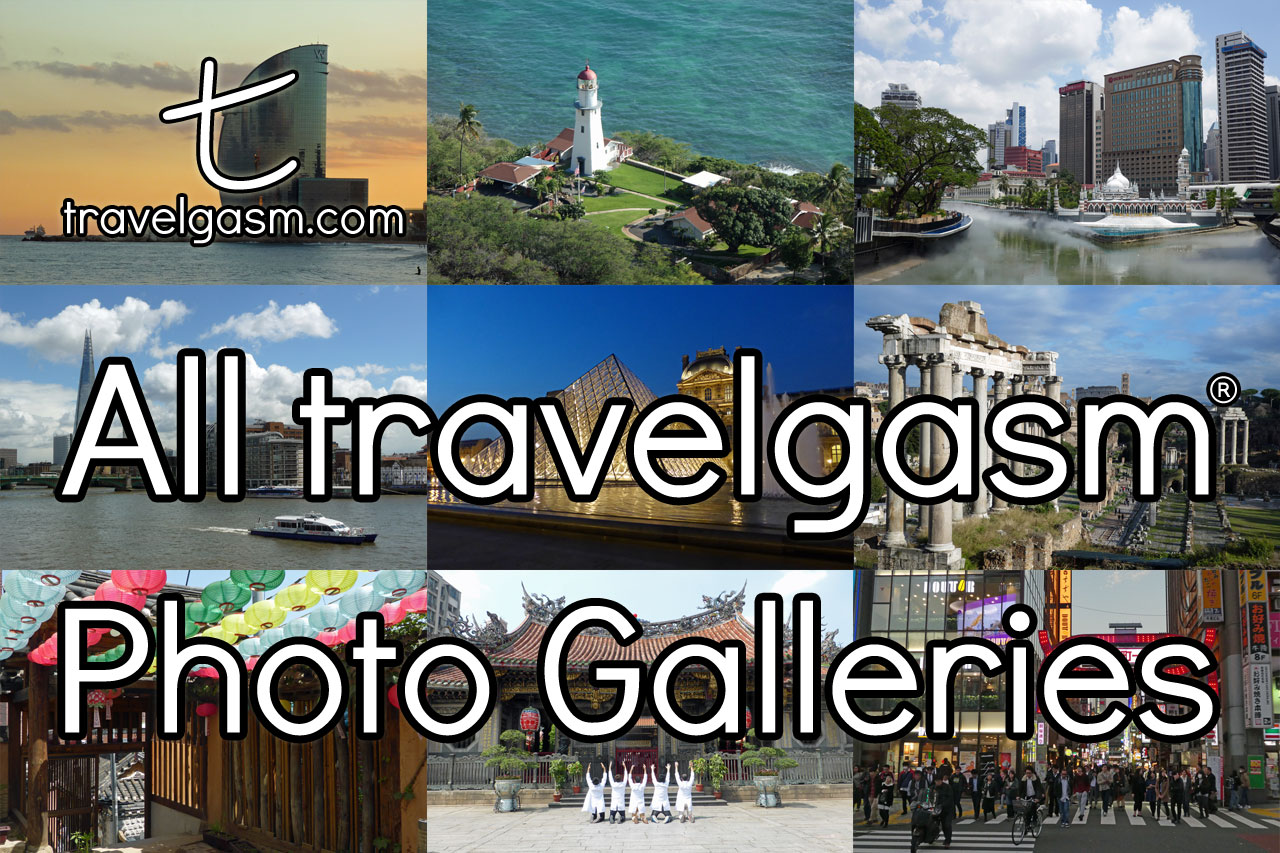Cities > Barcelona > 7 Things Tourists Do in Barcelona That You Should Do Also...
1) Ramble the Rambla
La Rambla: Barcelona's Famous Walking Street; La Boqueria and El Raval
2023 Travel Update: As of 2023, Spain essentially is open for tourism by both vaccinated and unvaccinated travelers without Covid-specific documentation or testing. However, be sure to double check the official government site for up-to-the minute details.
Without a doubt, Barcelona's most famous walk is La Rambla, a street that architects have long considered to be one of the world's best. In late 2022, the city kicked off a remodeling project to improve the street further by not only removing a lane of vehicular traffic — starting toward the sea — but also to attempt to make the merchant mix more attractive to local shoppers; noble goals for sure. Nevertheless, La Rambla already appears near the top of just about every visitor's list of must-see attractions in the city.
Walk, Shop & Stay Safe on La Rambla
Despite its lexicographical similarity to the English verb "ramble" (walk for pleasure), La Rambla actually is derived from the Arabic ram-la, for the sand of a dry creek bed. Because sections of the long street sometimes are given different informal names, it is not uncommon to see La Rambla pluralized as Les Rambles (Catalan) or Las Ramblas (Spanish), but technically it is one street.
La Rambla's usage as a market promenade in summer months goes back even further, but in 1704, the creek bed was covered, trees were planted, and it has been a proper walking street ever since. The street is flanked by hotels, restaurants, cafes, and tourist-targeted shopping, but the main activities simply are to stroll, people watch, and enjoy the ambiance.
Unfortunately, because La Rambla is thick with tourists and local laws tend to be woefully lax (theft less than €400 long was barely a crime, although there recently has been some strengthening of the law), the street is notorious for its pickpockets, con artists, and drug dealers. For a month on one visit to Barcelona, travelgasm.com was based just off La Rambla, and we witnessed several pickpockets, numerous tourists filing likely pointless police reports, and at least dozens of drug dealers. In general, on La Rambla, keep moving. Avoid anyone who is standing still but not selling an obvious product, who bumps into you, who tries to start a conversation, or who greets you with "coffee shop" or more bluntly, mota (marijuana).
We strongly recommend that you visit La Rambla first thing in the morning when it is quieter. By mid-morning, and certainly by the afternoon, it is overcrowded with tourists — particularly in the summer months — and pickpockets and assorted riffraff are doing their best to ruin someone's holiday.
If you want to shop on La Rambla, the most interesting portion — in our opinion — consists of the street stalls on Rambla de Santa Monica toward the sea where a variety of independent merchants often sell handicrafts that can be more unique than most tourist tat (although this area currently has the most construction). If you want to sit at a cafe on La Rambla and watch the world go by, you might choose to indulge in an overpriced glass of sangria (wine with fruit). Be sure to clarify the drink price, service charge, and whether or not there is an additional cost for sitting outside or using a chair prior to ordering, but we would not choose to eat at one of the cafes. Out of an abundance of caution, we also suggest avoiding La Rambla after dark.
Browse & Eat at La Boqueria
If you want to eat on La Rambla proper, we would suggest the famous Mercat de San Josep de la Boqueria (market), which just about everyone abbreviates as La Boqueria. La Boqueria traces its origin all the way back to 1217, and although it often is bursting at the seams with tourist crowds, it remains a genuine market. Note that La Boqueria is closed on Sundays and a variety of national and religious holidays.
Markets in other Barcelona neighborhoods cost less, but La Boqueria is a good first introduction to markets in the city. Because it hosts so many tourists, La Boqueria offers a particularly easy way effectively to buy samples of assorted meats and cheeses on a stick so you know your favorites ahead of time should you head to markets elsewhere and want to buy larger quantities.
To eat a proper breakfast or lunch in La Boqueria, there are no bargains these days, but three well-known joints include El Quim, Pintxo Bar, and Bar Central. We have eaten at Bar Central a couple of times and enjoyed it.
Much like La Rambla in general, we strongly recommend that you arrive at La Boqueria when it opens at 8 AM. By 10 AM, often pushy and disrespectful tour groups start to show up and it quickly becomes far less pleasant.
If you really are into food and wine, you also might like to book a casual Paella Cooking Experience or a more serious Half-Day Spanish Cooking Class. Both options include tours of La Boqueria and are well-reviewed.
Duck into El Raval for a Better Meal
If you want to eat near La Rambla, you almost certainly can get better food for a lower price in El Raval, which a local will tell you is on the Llobregat side of La Rambla (to your right when facing the sea).
Following extensive redevelopment in the 2000s, El Raval is not as bad as it once was. It now even boasts the trendy and relatively posh Hotel Barceló Raval, but it still has the highest rates of poverty in the central city. It also struggles with homelessness, drug and alcohol abuse, and street prostitution. In particular, we would suggest avoiding Carrer d'En Robador at any time. With a name like "Robber's Street," it is a safe bet that this thoroughfare has been dodgy for a long time. Like La Rambla, we suggest that you avoid El Raval after dark entirely.
If you primarily stick to the main walking streets in El Raval during the day — Carrer de Sant Pau and Rambla del Raval — your odds of trouble likely are no higher than on La Rambla. Three restaurants that we enjoy in this neighborhood include Bar Mendizábal for our favorite patatas bravas (fried potatoes) in the city, National Burger for high-quality hamburgers (albeit with painfully overpriced bottled water), and Maharaja for respectable Indian food.
Below, we have mapped out the best walk from applicable metro stations to La Rambla, Rambla de Santa Monica for shopping, the La Boqueria market, and our preferred route into El Raval.
How to Get Here: For the heart of La Rambla, we prefer to take take Line 3 (Green) to Liceu Station and start at the La Rambla / Mercat de la Boqueria Exit. Alternate arrival, as well as convenient departure points (also on L3, Green), include Catalunya Station (La Rambla) toward the mountains (away from the sea) and Drassanes Station (Santra Madrona or La Rambla) toward the sea. Note that for Liceu Station and Drassanes Station, you need to choose your travel direction from outside the station before heading down the applicable staircase. To head toward Trinitat Nova from Liceu or Drassanes, you will need to enter on the Besos side (left side of La Rambla when facing the sea). To head toward Zona Universitària, you will need to enter on the Llobregat side (right side of La Rambla, again, when facing the sea).
travelgasm.com's La Rambla & El Raval Map (Full Screen)
Cities > Barcelona > Barcelona Best 7 > Next: (2) Explore the Labyrinth... >>
Like La Rambla, La Boqueria, or El Raval? Tell your friends and frenemies on social media that you discovered them first:
Be sure to see our 7 Things Tourists Don't Do in Barcelona, but You Should, too.
Intelligent and good-looking readers of travelgasm.com like you also sign up for our free monthly-ish mailing list.
Live in Barcelona? What tourist attraction do you most like to share with visitors? Spotted anything out-of-date or inaccurately translated? Please tell travelgasm.com. Gràcies! Thanks!











